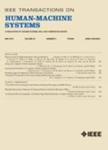版权所有:内蒙古大学图书馆 技术提供:维普资讯• 智图
内蒙古自治区呼和浩特市赛罕区大学西街235号 邮编: 010021

作者机构:Univ Arizona Dept Surg Tucson AZ 85721 USA Calif State Univ Fullerton Placentia CA 92670 USA Univ Arizona Ctr Management Informat Tucson AZ 85721 USA Intel Corp Chandler AZ 85226 USA IBM Corp Tucson AZ 85744 USA LaBudde Syst Inc Westlake Village CA 91362 USA Lockheed Martin Tact Def Syst Eagan MN 55121 USA SANDS Tucson AZ 85718 USA
出 版 物:《IEEE TRANSACTIONS ON SYSTEMS MAN AND CYBERNETICS PART C-APPLICATIONS AND REVIEWS》 (IEEE Trans Syst Man Cybern Pt C Appl Rev)
年 卷 期:1998年第28卷第1期
页 面:80-103页
核心收录:
基 金:This project has many shortcomings. We would like to add more tools and methods to this project such as CORE colored Petri nets Slate fuzzy-neural systems SilverRun the Objectory VHDL and Sim Factory. But so far we do not have expert authors
主 题:architecture design methodology logic design object-oriented methods
摘 要:Early in the system design process, a design method must be chosen, This choice is usually dictated by what methods the designer has previously used, not by an open selection process. In this paper, we provide descriptions of some available design methods and examples of their use. In this project, we will develop benchmark problems that will be solved by a variety of design methods and will identify characteristics of problems that might make one system design method more or less appropriate. The top-level question we wish to answer is for which type of problem is each method best? If a system is to be built, then the system must ultimately be described as a collection of state machines. However, these state machines are often not created by the systems engineers. The systems engineers use some method to create a high-level abstraction of the desired system. Then they turn this abstraction over to the specialty engineers who actually reduce it to a collection of state machines. In this paper, we present solutions for a simple design problem by using the following 11 high-level system design methods: state transition diagrams, algorithmic state machine (ASM) notation, model-based system engineering, Graphical Description Language, RDD-100, structured analysis (using entity relationship diagrams, data-flow diagrams, and state transition diagrams with Ward-Mellor notation), functional decomposition, object-oriented analysis (OOA) with Shlaer-Mellor notation, OOA and object-oriented design (OOD) with Booch notation, an operational evaluation modeling-(OpEM)-directed graph, and IDEFO. Each method was used by an expert user of that method. The solutions presented make it obvious that the choice of a design method greatly effects the resulting system design.